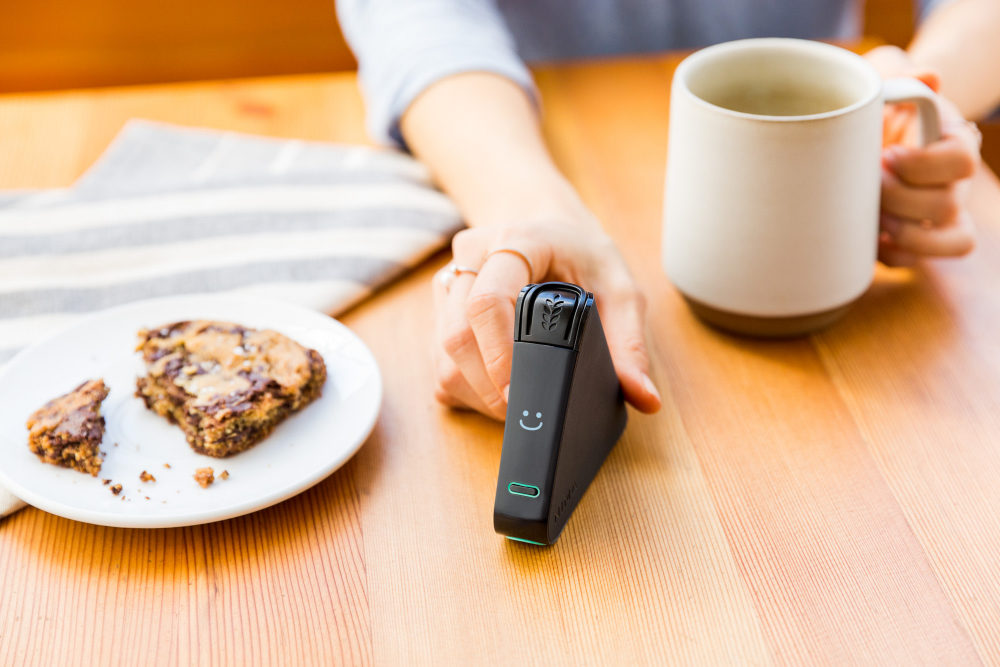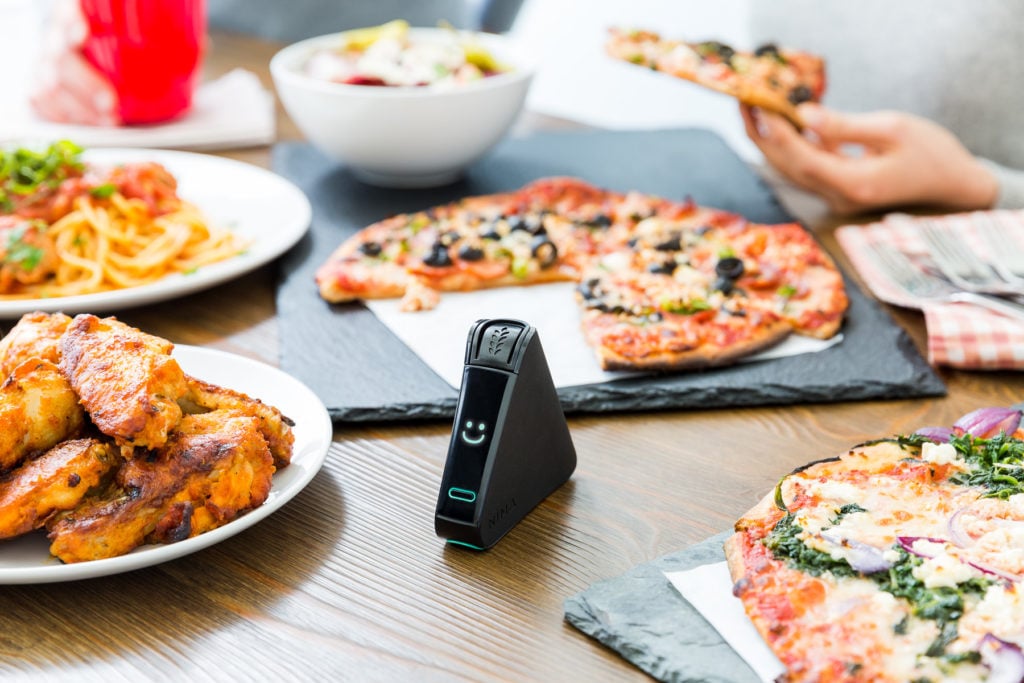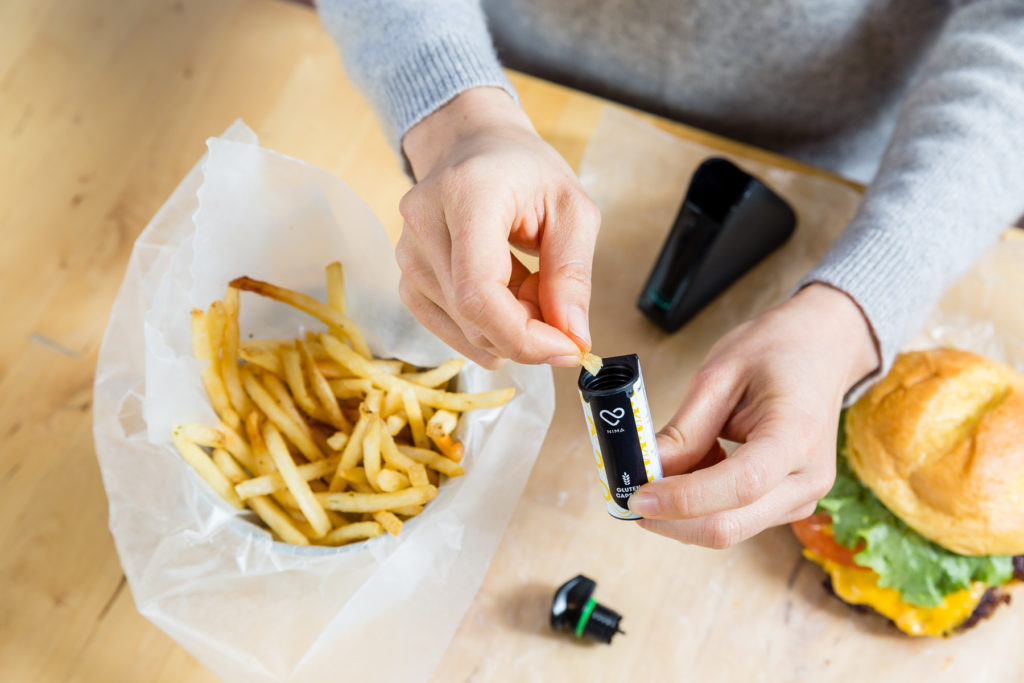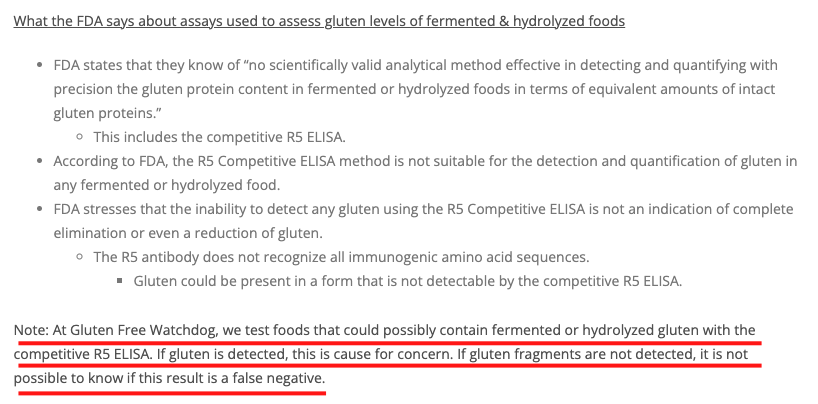
Many people wonder if Nima Sensor, a popular gluten-detecting device, is accurate. This article will get to the bottom of this controversy. If you’re considering purchasing a Nima Sensor, read this article to understand the device’s pros, cons, and limitations. This post contains affiliate links. Please see my disclosures.
As a proponent and personal user of the Nima Sensor, I’m always asked, “Is Nima Sensor accurate?”
This question has often popped up due to some misleading information published on the Internet questioning the device’s accuracy.
In this article, I’ll show you how accurate Nima is when used correctly and how important it is in helping keep you safe at mealtime.
I’ve been using Nima for a long time, and I’ve never understood why some people in our community have chosen to talk about Nima disrespectfully. This product is here to help our community eat safely and be healthy.
While the product is not perfect, it’s the best (and only) watchdog that provides transparent insights into the actual food placed before you.
Today, I’ll get to the bottom of the, Is the Nima Sensor accurate?” question so you can put your mind at ease and feel good about using a device built with the gluten-free community’s best interests at heart.

What Is Nima Sensor?
Nima Sensor is a small, triangle-shaped portable gluten-detecting device. Users add a pea-sized amount of food to a disposable, single-use test capsule and then insert the test capsule inside the device.
In about 1-2 minutes, Nima will reveal if it found gluten or will smile, which means it didn’t find any gluten.

The Benefits of Nima
The primary benefit of having a Nima Sensor is that it can help you determine if the exact food placed before you is gluten-free. While you can look for visual clues and use your skills and knowledge to order and purchase food as safely as possible, at the end of the day, do you really know what’s inside your food?
When you know with greater certainty that the food in front of you is free from gluten, a protein found in wheat, barley, rye, and sometimes oats, you can better adhere to the gluten-free diet.
Adherence to the gluten-free diet is challenging for the gluten-free community, yet medically necessary for those with celiac disease and gluten sensitivities. One study indicated that “many individuals following a gluten-free diet regularly consume sufficient gluten to trigger symptoms and perpetuate intestinal histologic damage.”
Another study, known as the “Doggie Bag Study” because participants provided researchers with leftovers from restaurants to test, found nearly half of the leftover food samples contained more than 20 parts per million (ppm) of gluten, and five of the samples contained more than 100 ppm of gluten! Twenty ppm is the FDA legal limit for gluten-free labeling – more on this in a bit.
Nima is a game-changer for the gluten-free community because it offers a new level of transparency and insight that has never been available before.
Is Nima Accurate?
While Nima is a fantastic tool for identifying gluten inside food, many community members question whether the device is accurate.
A Nima Sensor peer-reviewed study published in Food Chemistry Journal found that the device found gluten at or above 20 ppm at a 96.9 percent accuracy.
Let that sink in for a moment. The Nima Sensor is 96.9 percent accurate at detecting gluten at a 20 ppm level or higher.
However, one critic is misleading the gluten-free community into thinking that Nima will fail to detect gluten at 20 ppm 20 percent of the time. This is a highly misleading interpretation of the data. Nima says on its website that this data point is “almost entirely driven by one specific food out of 13 tested. That sample, when quantified, was actually below 20 ppm.”
The 20 ppm debate is a hot one in the gluten-free community. As mentioned, the FDA says a product can be labeled “gluten-free” as long as it contains no more than 20 ppm of gluten and contains no gluten-containing grain such as wheat, barley, and rye.
One of the reasons the FDA established the 20 ppm level is because it was the total amount of gluten that could be accurately and precisely measured by validated testing methods available at the time the FDA set the ruling. It’s also based on an important study that found how much gluten a person with celiac disease could safely eat in a day without experiencing intestinal damage.
Nima often detects gluten at levels below 20 ppm across various foods. This over-accuracy has led some Nima critics to tout that the device isn’t reliable and can’t be trusted because it’s too accurate.
Nima Sensor doesn’t deny that its device sometimes detects gluten at lower levels than 20 ppm. If a product contains five ppm of gluten, Nima will report “gluten found” 35 percent of the time, and when the level of gluten is ten ppm, Nima reports “gluten found” 56 percent of the time.
Is such over-accuracy a good thing? Maybe. It depends on the person.
While some say zero gluten should be the gold standard, research doesn’t support this. Dr. Alessio Fasano, one of the lead researchers charged with setting the FDA’s 20 ppm gluten threshold, says setting the gluten-free labeling threshold below 20 ppm could drastically reduce gluten-free options in the U.S. and, most importantly, is unnecessarily restrictive. (Read: Can You Be Too Gluten-Free? How to Balance Dietary Vigilance Without Losing Your Mind.)
While I’m not here to argue whether the 20 ppm gluten threshold goes far enough, it is the basis for why some people discard the Nima because it is “too accurate.”
For Nima to find more favor in the gluten-free community, it would need to set its threshold for displaying a smiley face at 20 ppm or greater and not indicate “gluten found” at levels below 20 ppm. Or it would need to identify exactly how much gluten is found – was it 11 ppm, 17 ppm, or 32 ppm of gluten?
As it turns out, Nima says it purposely tries to be as accurate and transparent as possible, identifying ANY gluten found. Here’s why:
(1) Technology Gadgets Require a Margin of Error
Nima Sensor says that, from a scientific perspective, to design the Nima Sensor with a margin of safety, it had to develop a test that could detect gluten below 20 ppm, not just at 20 ppm and up as specified by the FDA.
(2) Nima Developers Faced an Ethical Dilemma
The Nima Sensor team says it faced an ethical dilemma during the development process of the gadget. The developers asked themselves, “If we detect gluten below 20 ppm, could we ethically report it as gluten-free?”
While Nima says it didn’t have a legal obligation to report any gluten found below 20 ppm, the company questioned whether it still had an ethical obligation to report such information.
Let’s say Nima only reported “gluten found” when the food item contained 21 ppm but reported a food item as “gluten-free” when it contained 19 ppm. Is there a significant difference between 21 ppm and 19 ppm? And do people using Nima want to know when 19 ppm gluten is found in their food, or do they only want to know if it’s gluten-free regardless of ppm?
Australian researchers set out to determine what threshold of gluten intake is reasonably safe for people with celiac disease to consume. They concluded that “individual variability” intolerance to gluten makes it difficult to set a “safe” threshold for everyone.
They said there is no definitive threshold level of gluten safe for all people, which contradicts what Dr. Fasano’s team found. This study may demonstrate how the 20 ppm threshold doesn’t work for everyone. I’ve discussed this topic in detail in my article, Is the FDA’s 20 ppm Gluten Threshold Enough?
If Nima can figure out a way to reveal the level of gluten detected, say 11 ppm or 29 ppm, such information would be a game-changer and silence many of the Nima critics who say Nima is “inaccurate.”
Gluten-Free Watchdog vs. Nima
Nima empowers anyone to test the food placed before them for hidden gluten. This is a powerful tool that enables users to navigate a variety of complex food and social situations.
Yet, one of the most vocal Nima critics, The Gluten Free Watchdog, says she doesn’t recommend the device because of its “false positives,” which, as you now know, means the device is too accurate since it detects gluten under 19 ppm.
Please note the device also has true false positives at times, especially when testing powdered foods, brightly colored foods, and thick or dense foods). You can read about these false positives in my article, What You Need to Know About Nima Sensor Before You Buy.
The Gluten-Free Watchdog, however, shares the results of products she tests for hidden gluten with the community. She charges a monthly fee to see these results. Yet, these tests say nothing about the bag of Doritos or hamburger bun placed before you or me. If she thinks Nima is dangerous, what does it say about the information she provides?
Alas, The Gluten Free Watchdog posts this disclaimer on its tests: “Test results provide a snapshot picture of the gluten content of this product at one point in time. There is no way of knowing without testing many more samples whether the results of the one sample tested are representative of the gluten content of this product as a whole.”
The Watchdog also says (screenshot below) that R5 ELISA tests (which it uses) may not reveal the extent of the gluten in a product if the food has been fermented or hydrolyzed (same limitation as Nima!). Alas, no testing method is perfect.

It’s also worth noting that some Nima users misuse the device, rendering it inaccurate. They don’t abide by the limitations set forth by Nima, and they test foods that contain gluten (e.g., barley malt or soy sauce), which Nima cannot detect. Nima cannot identify gluten in fermented or hydrolyzed foods. I’ve listed all known Nima Sensor limitations below.
Nima also cannot tell you if an entire pizza, for example, is gluten-free; it can only tell you if the small sample tested is gluten-free. If you put the whole pizza in the test capsule or sent it to a lab to test, what would be left for you to eat?
Tip! I usually test items at risk for gluten cross-contamination by rubbing the piece I’m going to test over the rest of the dish.
Bottom Line: Nima Sensor is Accurate
When deciding whether or not to eat food, gathering as much information as possible is important. For example, when eating packaged foods, you must analyze the ingredient listing, May Contain statements, and other disclosures. You may also need to further research the product by contacting the manufacturer.
When eating out, you must ask a lot of questions, order responsibly (avoiding foods like pizza and pasta that are notorious for cross-contamination), convey the seriousness of your “allergy” to servers, and, in the end, test your food for hidden gluten if you’re still feeling uncertain. All of these factors should be part of your decision-making process.
You could also use the Nima Sensor app to gather data on other Nima users’ experiences. For example, you can see what 50 Nima users found when they tested Cheerios or Chipotle in the Nima app. You could use these data points to help you make an informed decision about whether or not you feel comfortable eating at a restaurant.
That said, you should not decide to eat something based on Nima Sensor alone. That would be a foolish and incorrect use of the device; instead, Nima should serve as a data point in the process and not a guarantee. It’s up to you to make the final decision on whether or not you will eat something.
Ultimately, no food is 100 percent guaranteed safe. Even two ELISA-certified labs provided widely different results when testing the same products for gluten. And gluten above 80 ppm was found in certified gluten-free oats from GF Harvest.
Nima Sensor Limitations
Remember, when Nima is used properly, it offers 96.9 percent accuracy.
However, it’s important to note that a few limitations can render your test(s) inaccurate. This is why you must be an educated and truthful user of this tool. With great power comes great responsibility.
Nima is not a substitute for lazy ordering or testing foods you haven’t properly vetted.
Limitation #1: Nima cannot detect gluten in fermented foods, such as beer and alcohol, nor in hydrolyzed foods, such as soy sauce and malt extract/flavoring, where the gluten protein has been broken down into potentially undetectable bits.
Limitation #2: Nima has not been validated to test medication, cosmetics, or other non-food items.
Limitation #3: Nima cannot detect gluten in pure xanthan or guar gum.
Limitation #4: Nima tests only a small portion of food, not the entire dish. Therefore, there could be hot spots of gluten in parts of the food that didn’t get tested.
Limitation #5: If you overfill the test capsule, Nima will likely malfunction, resulting in an error message. Be careful not to overfill the capsule, especially when testing liquids. Only a pea-sized amount of food can be tested at one time.
Some foods require a little extra doctoring to produce an accurate test. Foods that are hard, dense/thick, sticky, powdery, high in fat (cream cheese), brightly colored, or acidic require that you add a few drops of water to the test capsule. Puffed foods require a larger test sample size.
Limitation #6: Nima doesn’t display the precise parts per million (ppm) of gluten in the sample being tested. This means you won’t know if the sample contained 500 ppm or 19 ppm. Nima only displays a “gluten found” message when it detects gluten and a smiley face when it finds no gluten.
The ALLIS Sensor promised to share the exact ppm of gluten detected, which would have been a game-changer for the gluten-free community. Unfortunately, ALLIS went defunct and took the money of everyone who pre-ordered one (including me!).

Limitation #7: Bright-colored foods, and some spices like turmeric and cumin, when tested in their pure form, can sometimes result in a false positive.
Again, Nima Sensor is not perfect, but it’s the best thing the gluten-free community has when testing food for hidden gluten. It’s unrealistic to send our food to a lab before eating it. Nima offers a quick snapshot of the actual food you’re about to eat. Is it perfect? No. Is it a great tool to have in your toolkit? Absolutely!
When to Use the Nima Sensor
Below are a few scenarios when I have found the Nima Sensor to come in handy:
- When that gluten-free hamburger bun looks too good to be true (like at Bryon Burgers in London) – test it!
- When my restaurant server tells me they have a dedicated fryer, but I notice chicken nuggets on the menu – test it!
- When the labeling of a product, like Doritos, isn’t clear – test it!
- When I eat out and don’t feel like my waiter is taking my request seriously (nor did he write down my order) – test it!
- When I’m traveling and want to ensure the language barrier doesn’t get in the way of getting a safe meal – test it!

Restaurants can (and should) use Nima to provide their gluten-free patrons with an added level of security. The Blu Star Grill in Mooresville, North Carolina, regularly tests its raw ingredients and gluten-free dishes for gluten using Nima, showing just how easy it can be for restaurants to get gluten-free right. (If you live in or near Mooresville, NC, please eat at the Blu Star Grill!)
It’s exclusively on sale on amazon. Check there for latest pricing.
How much is this? I have celiac disease
Thank you for sharing Tom! I’m glad Nima has improved your life. Mine too!
Until I started using a Nima sensor, I was getting glutened nearly every time I traveled. I was sick for weeks and even months afterwards.
The Nima sensor has saved me multiple times since then, and as a result, my health has improved. When forced to eat at a restaurant, I always test. Unfortunately, here in the Midwest, it seems two out of three restaurants who claim to be able to make a gluten free dish are unable to do so, and I’ve about given up eating in restaurants.